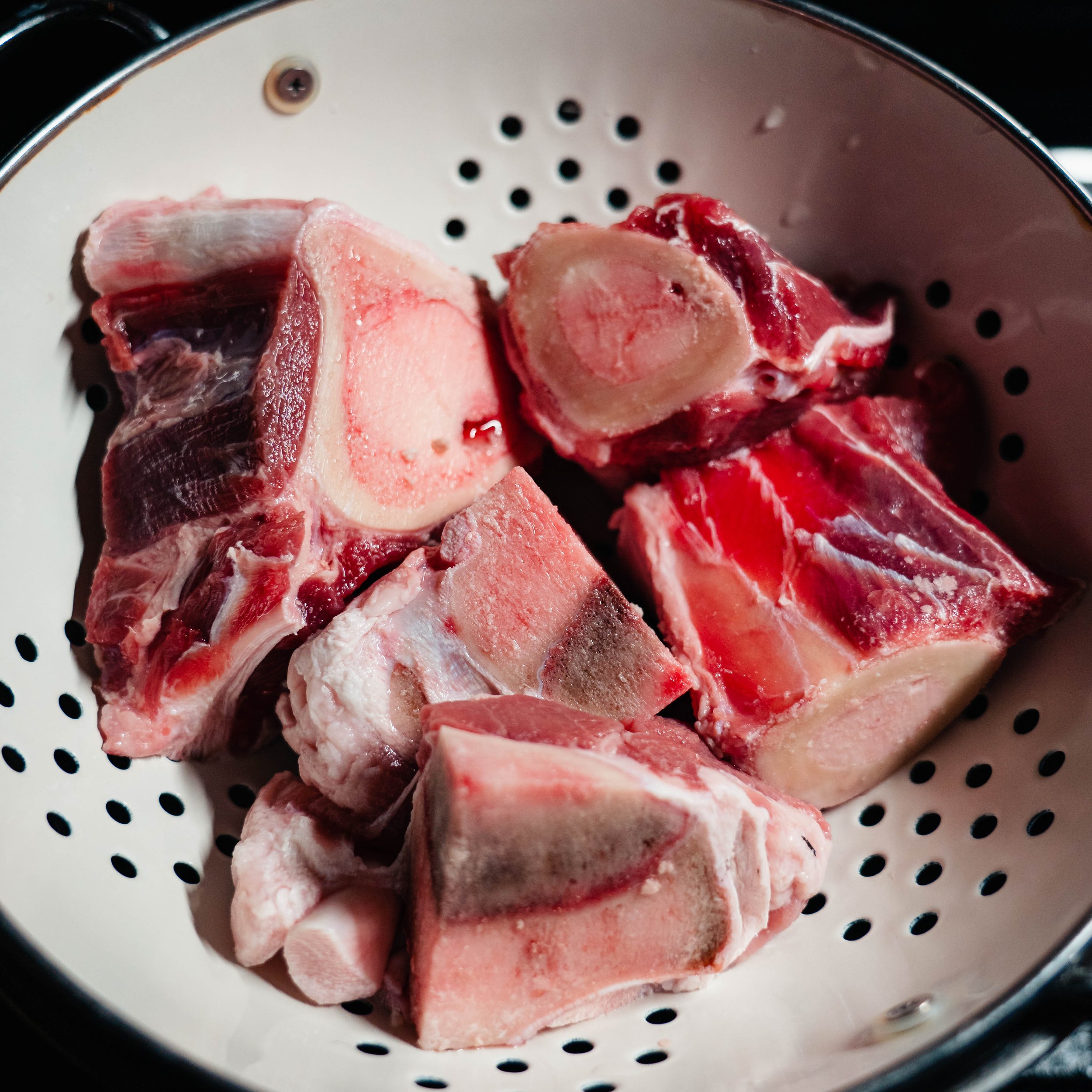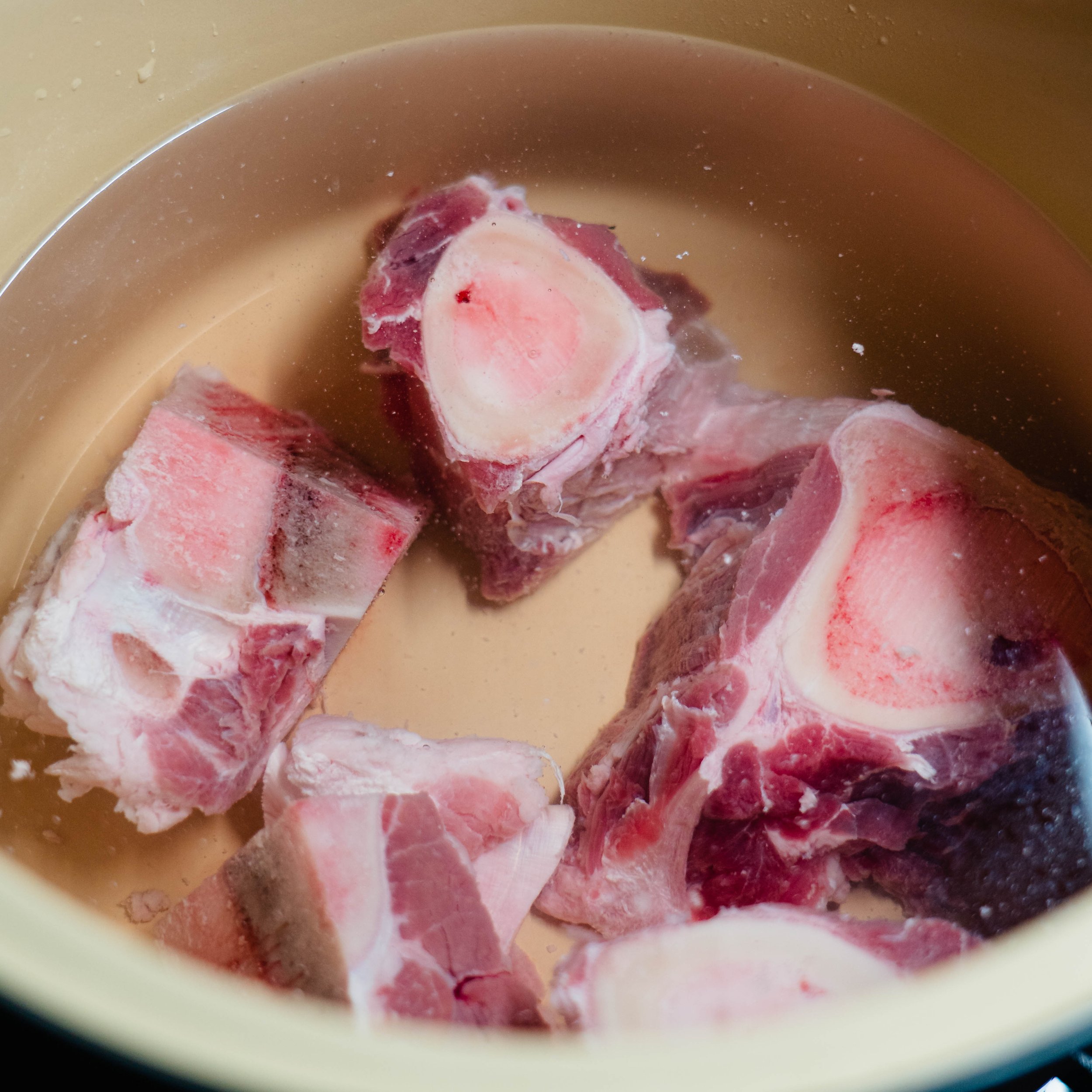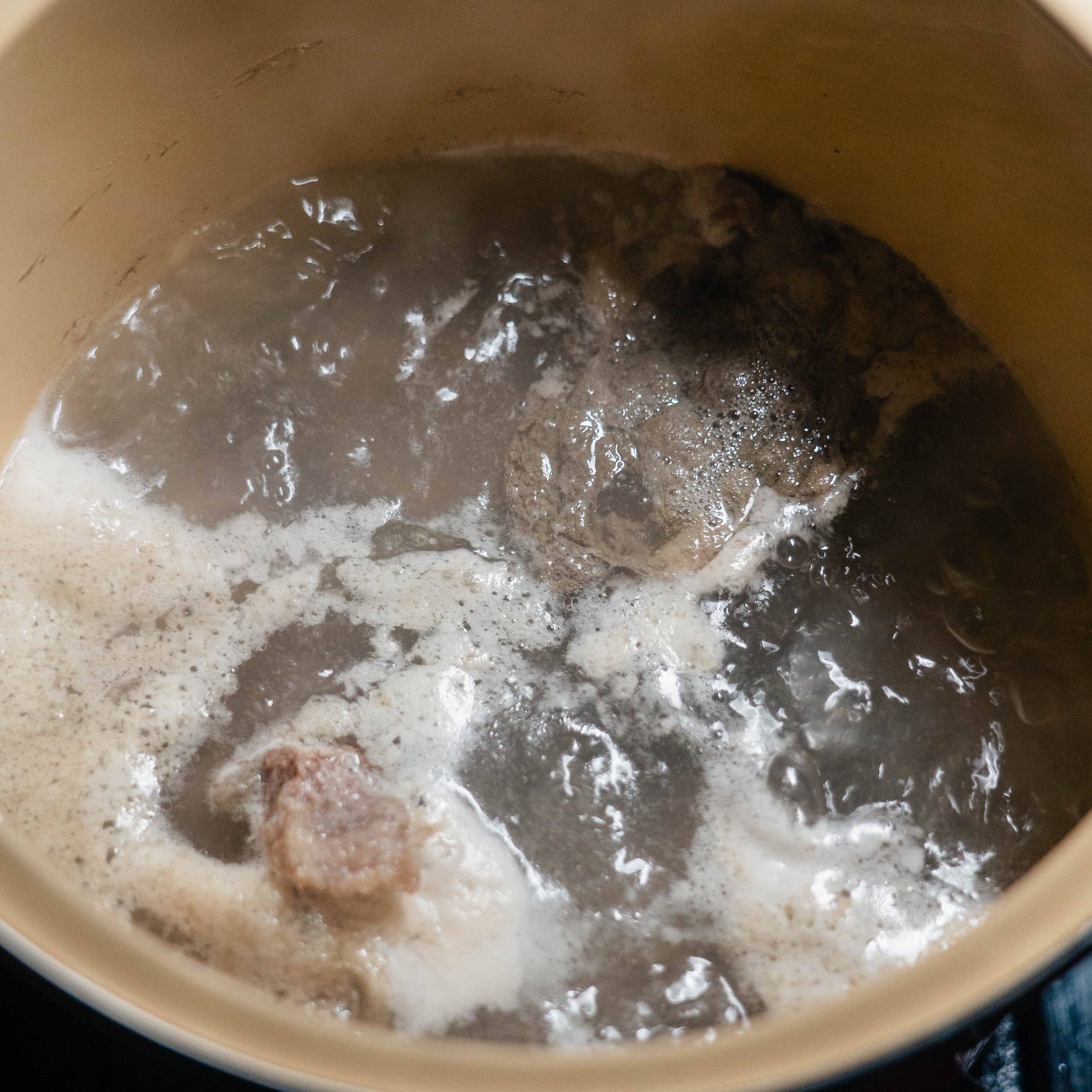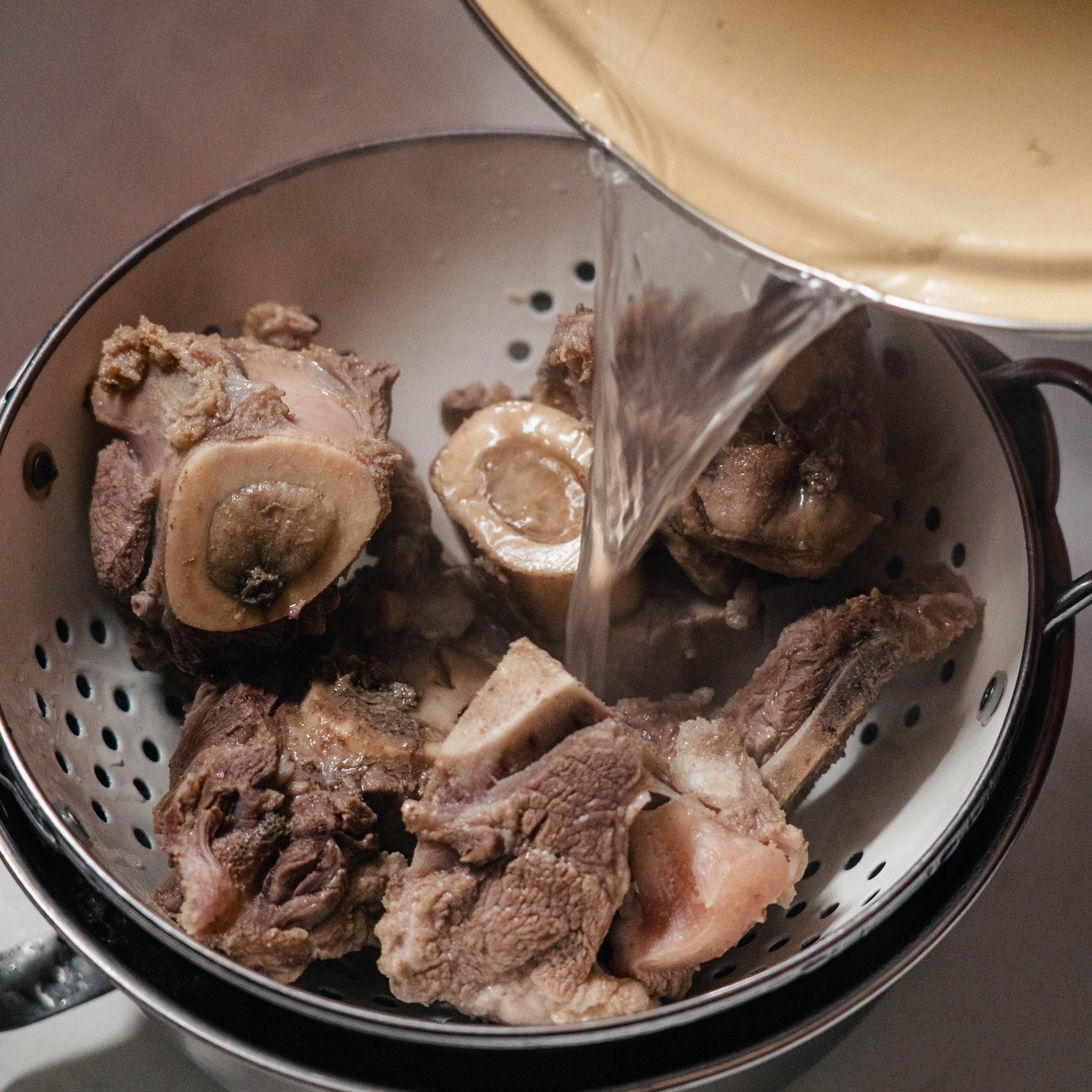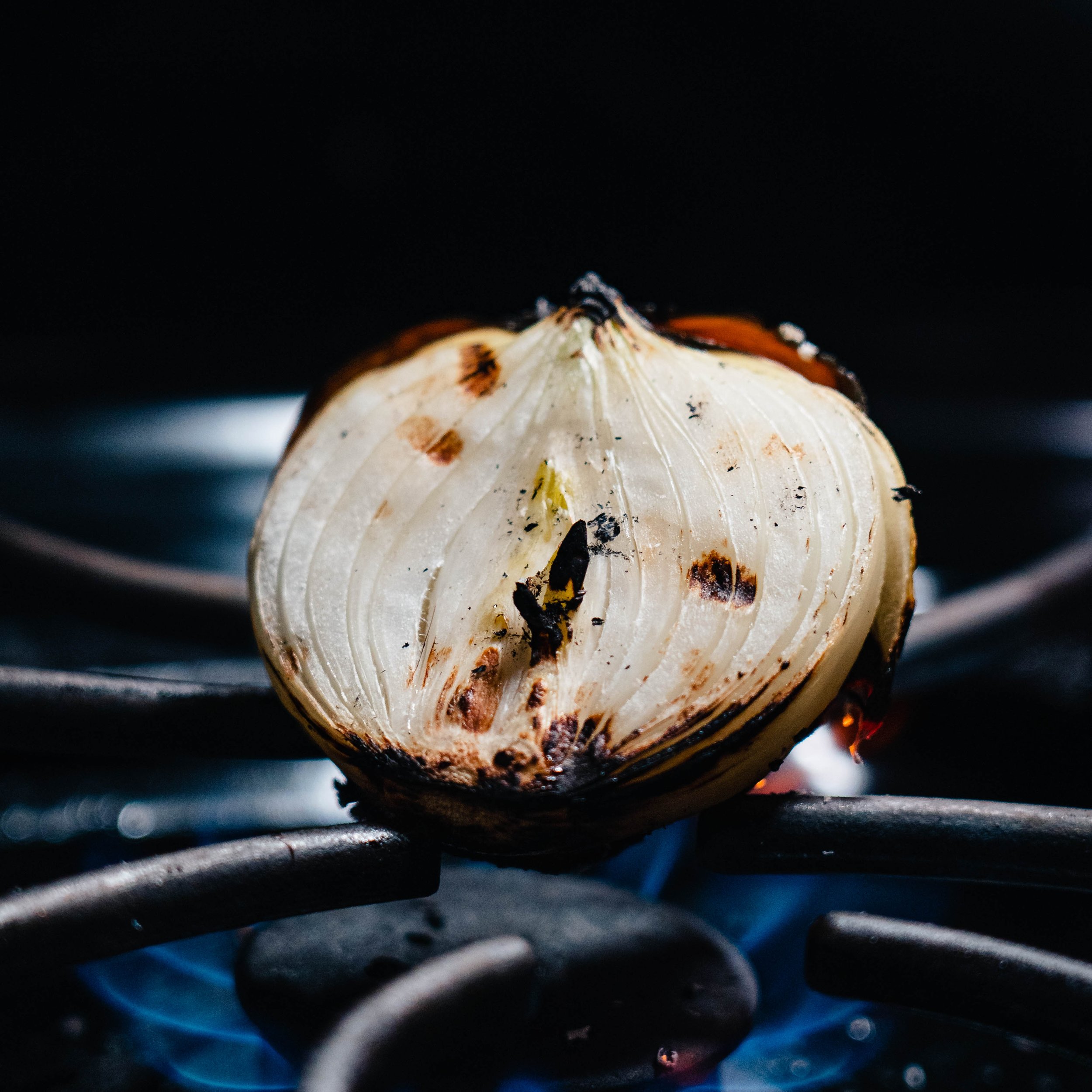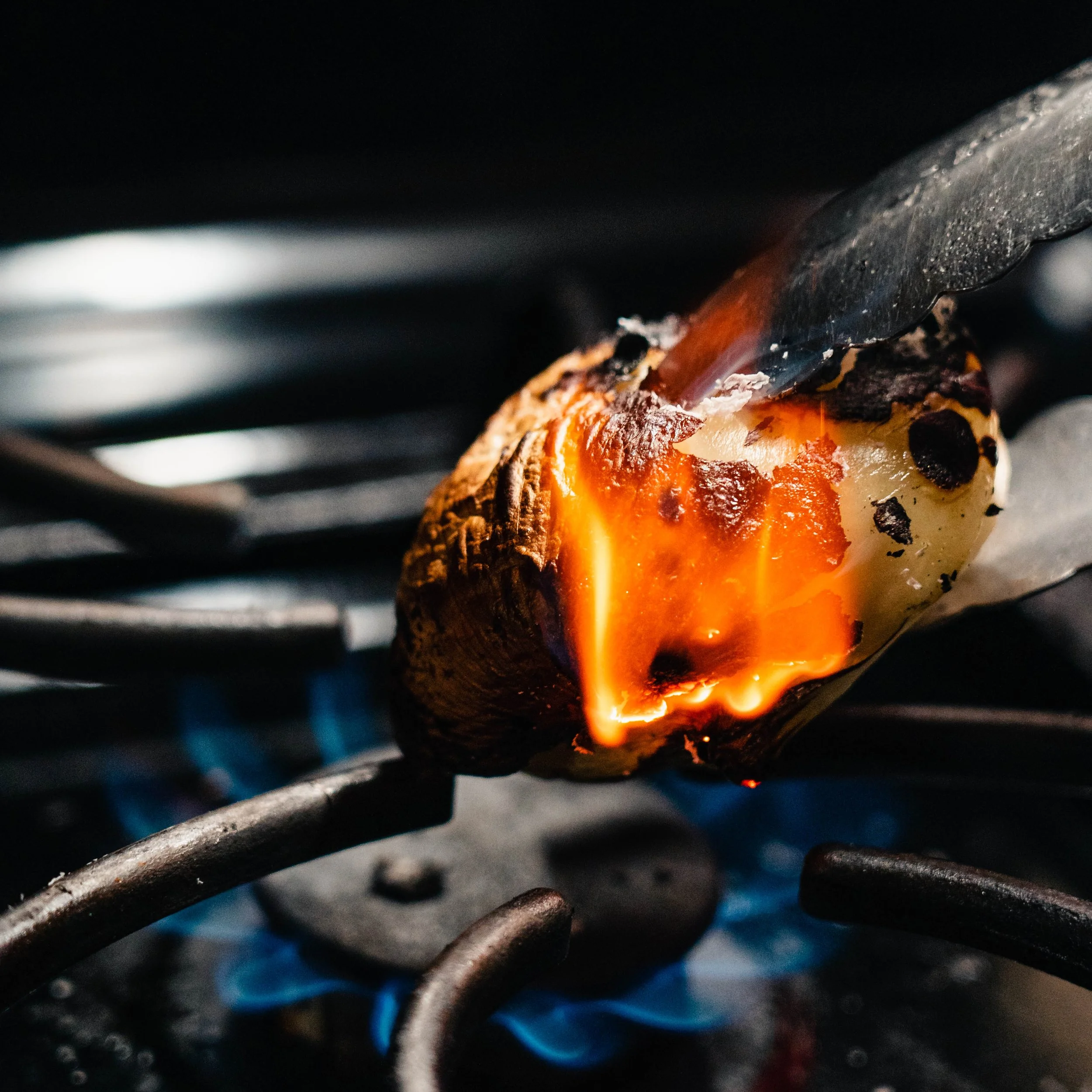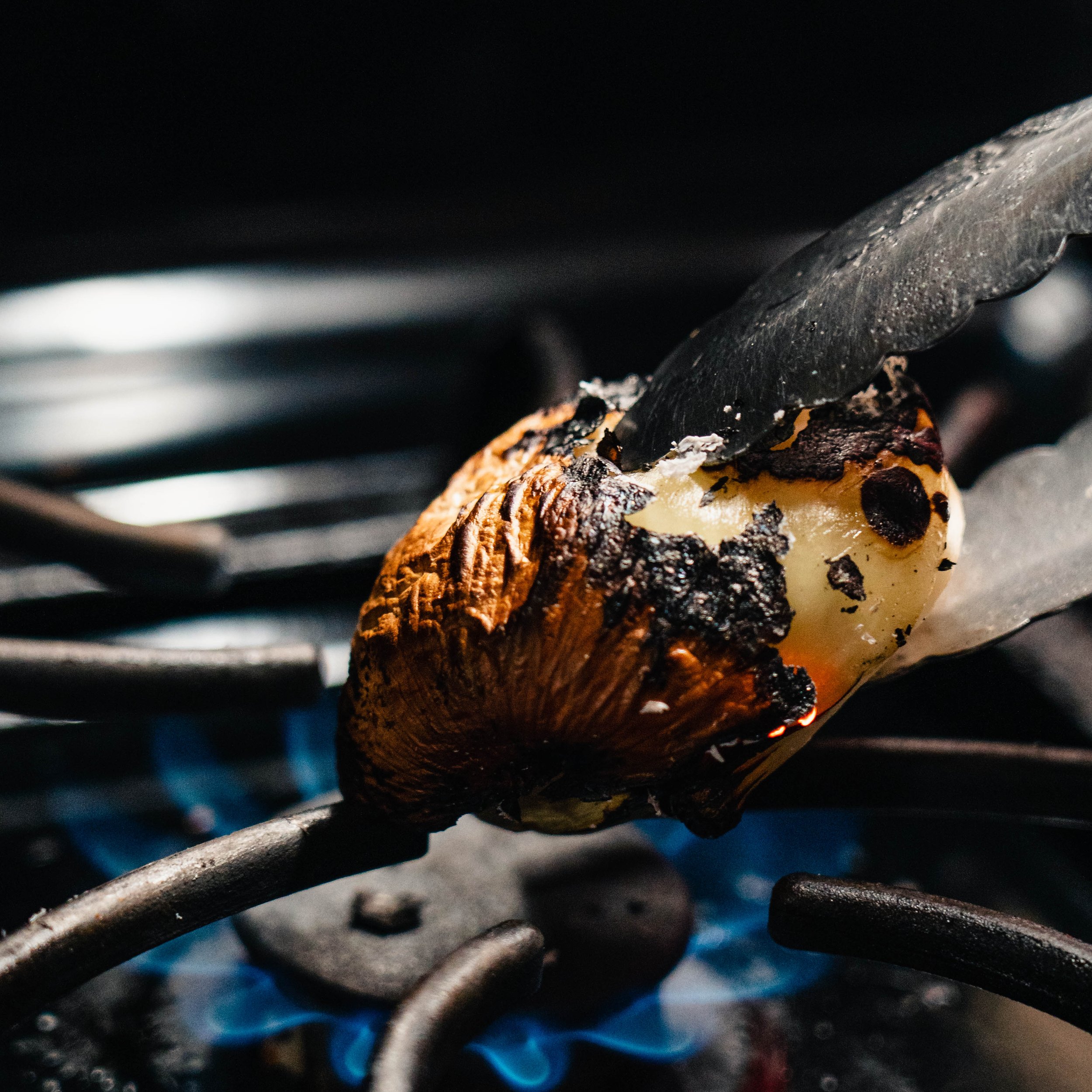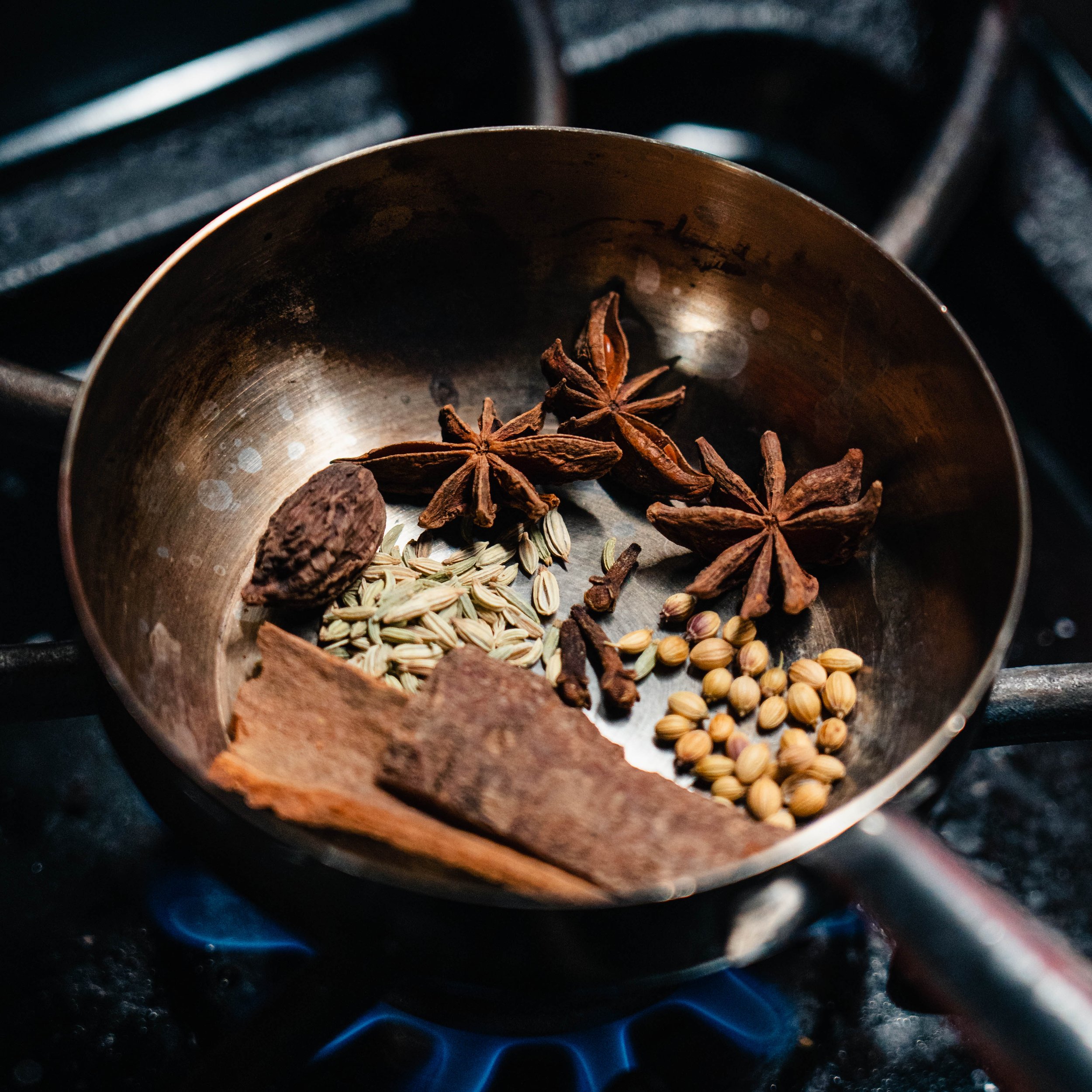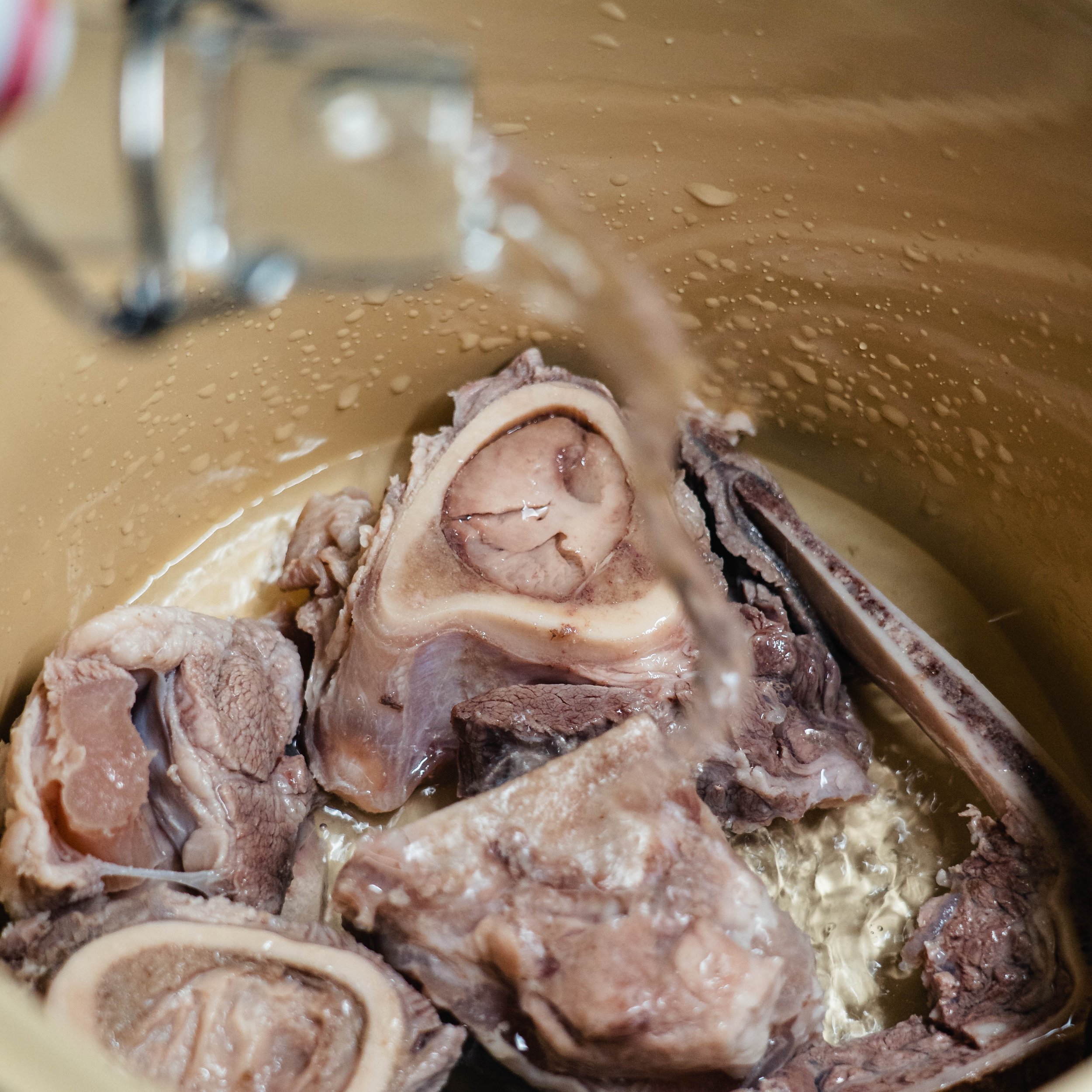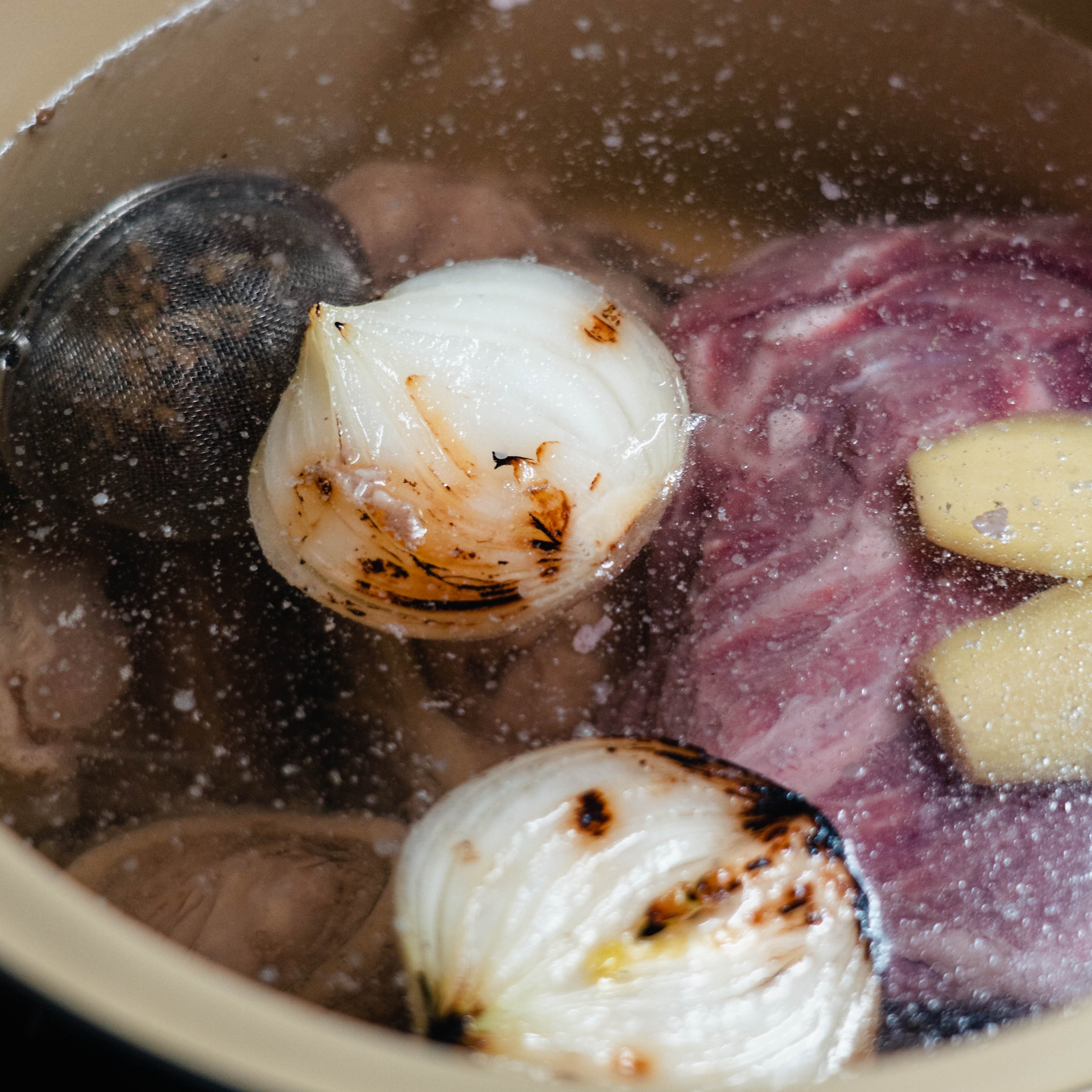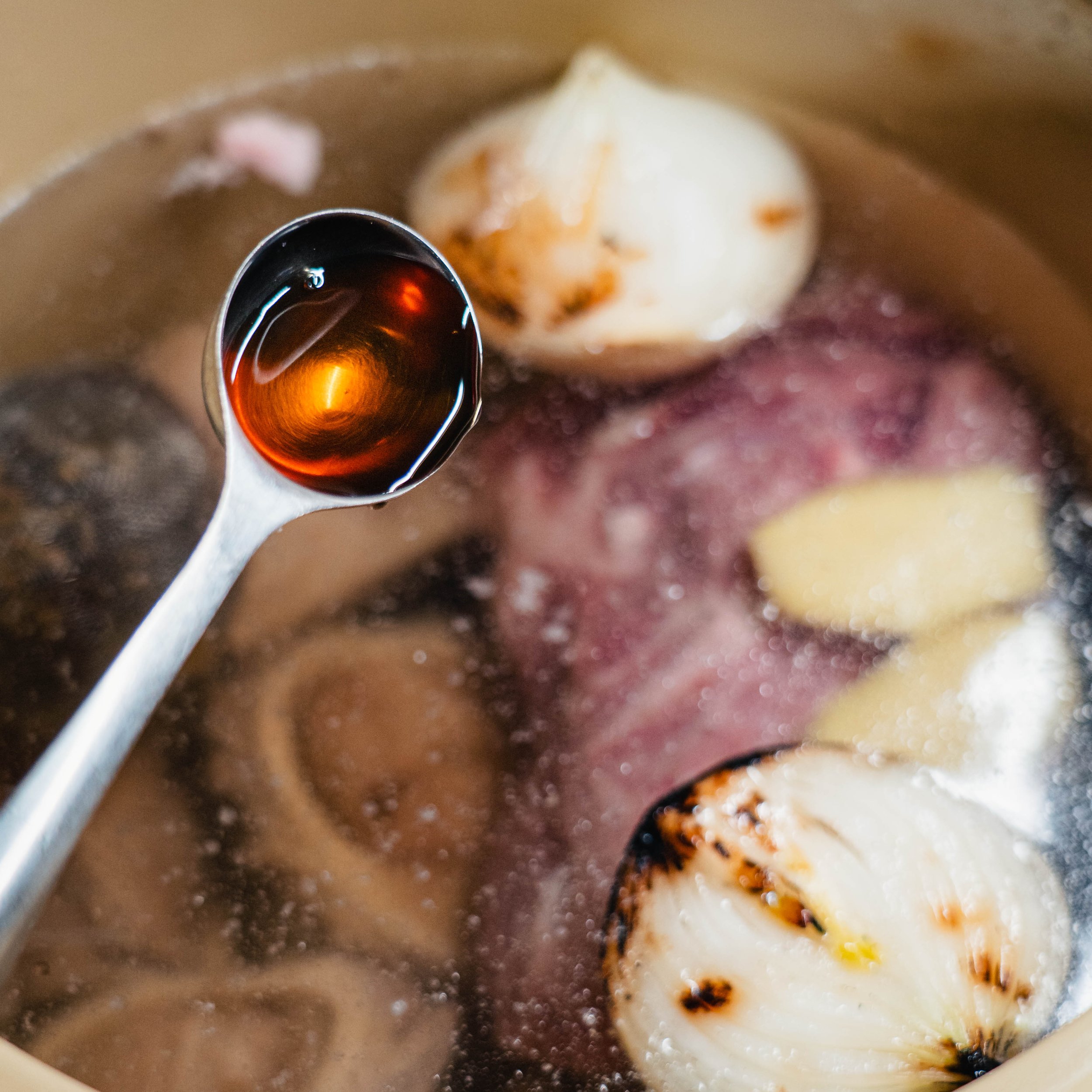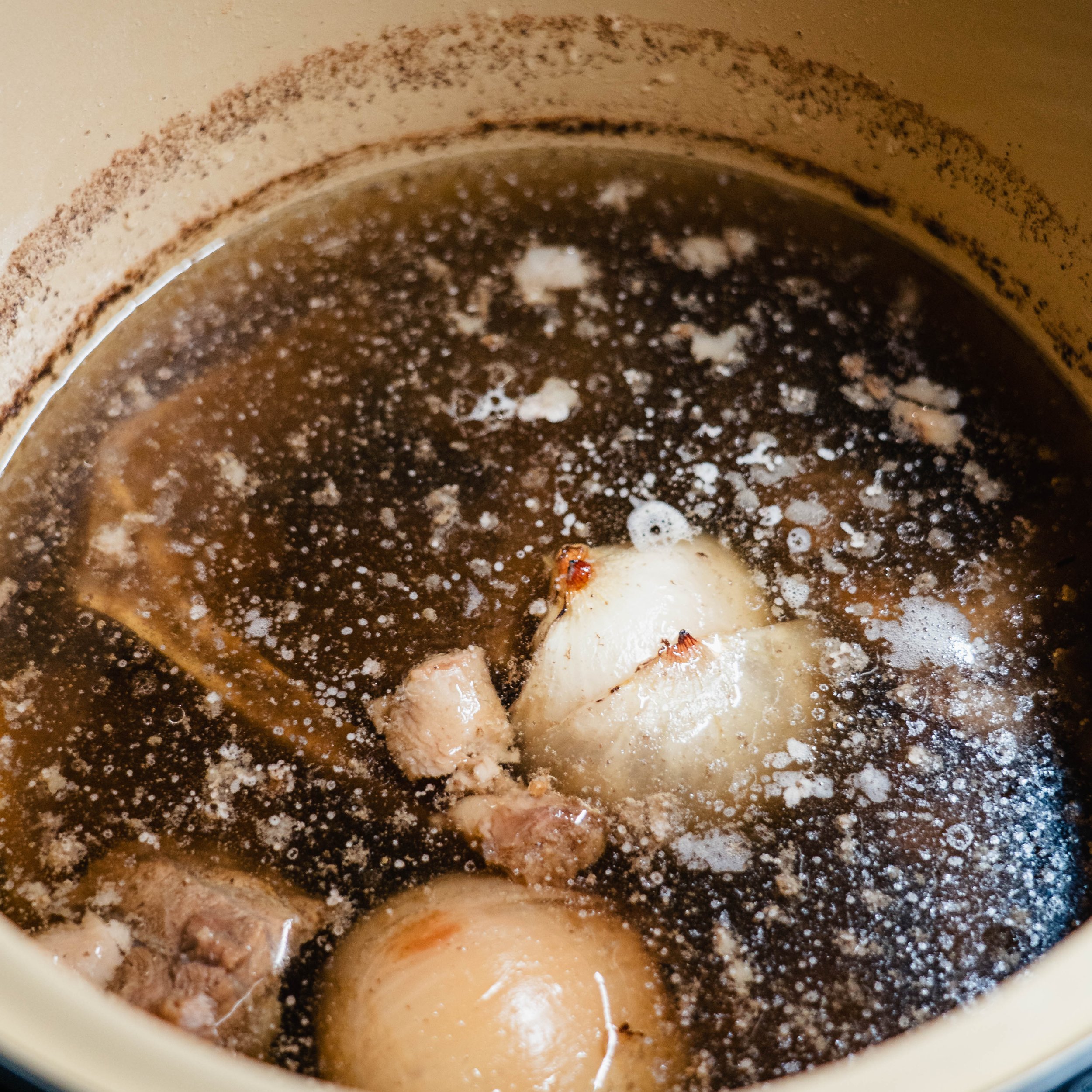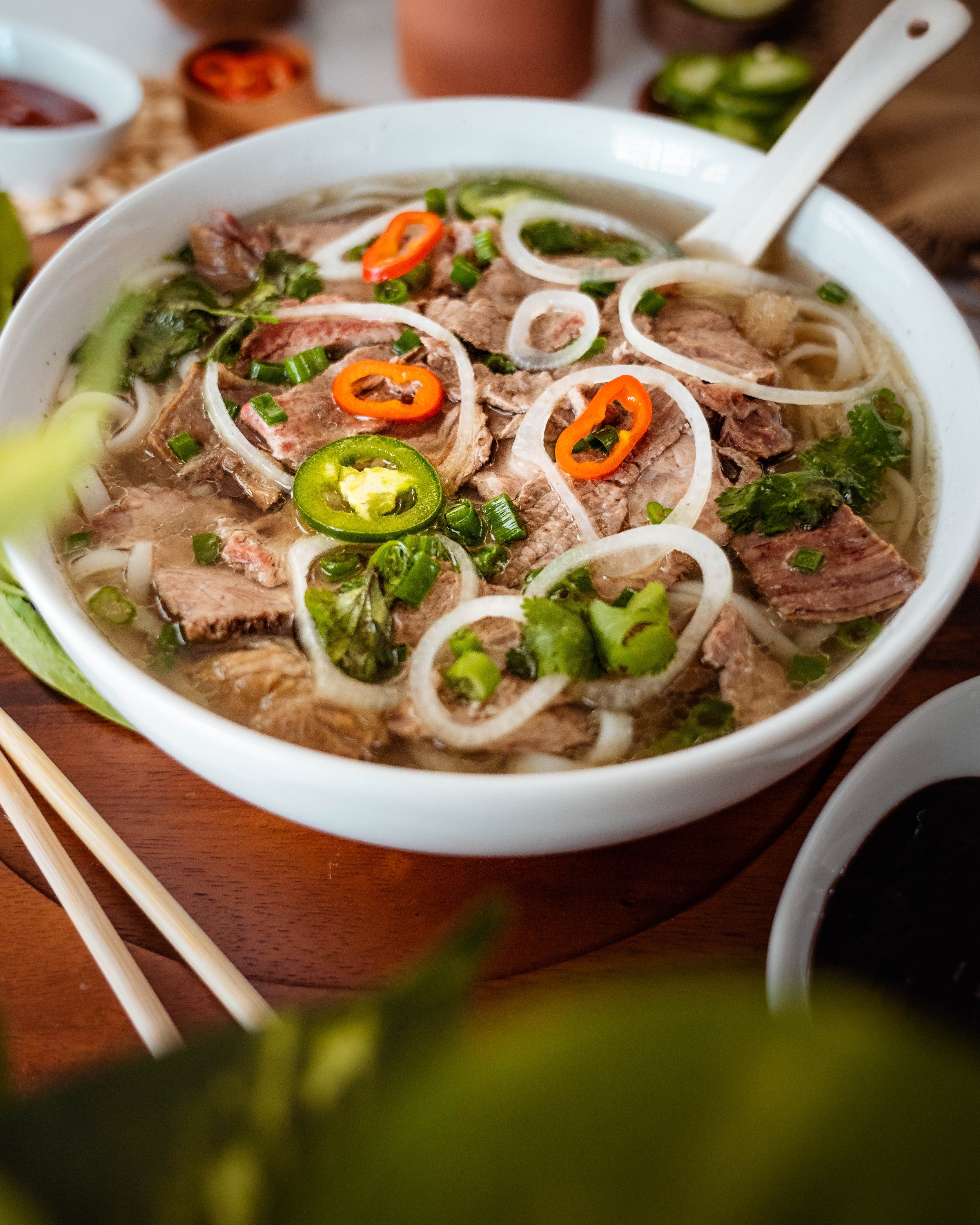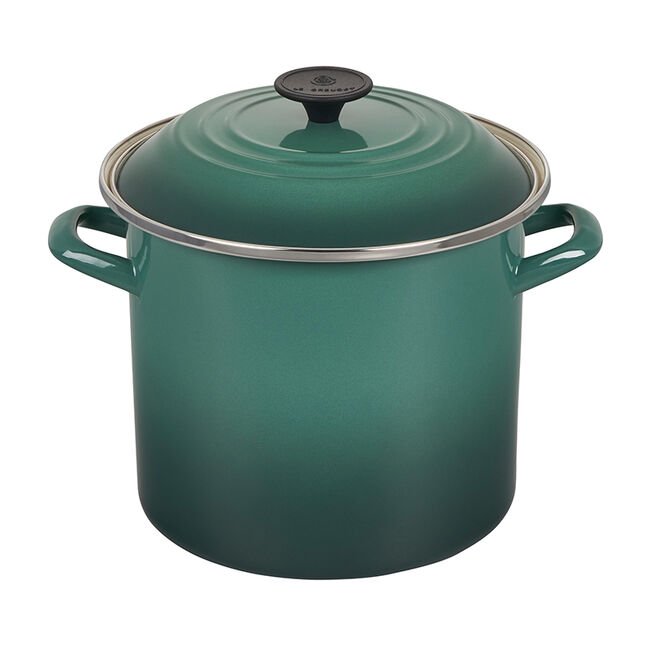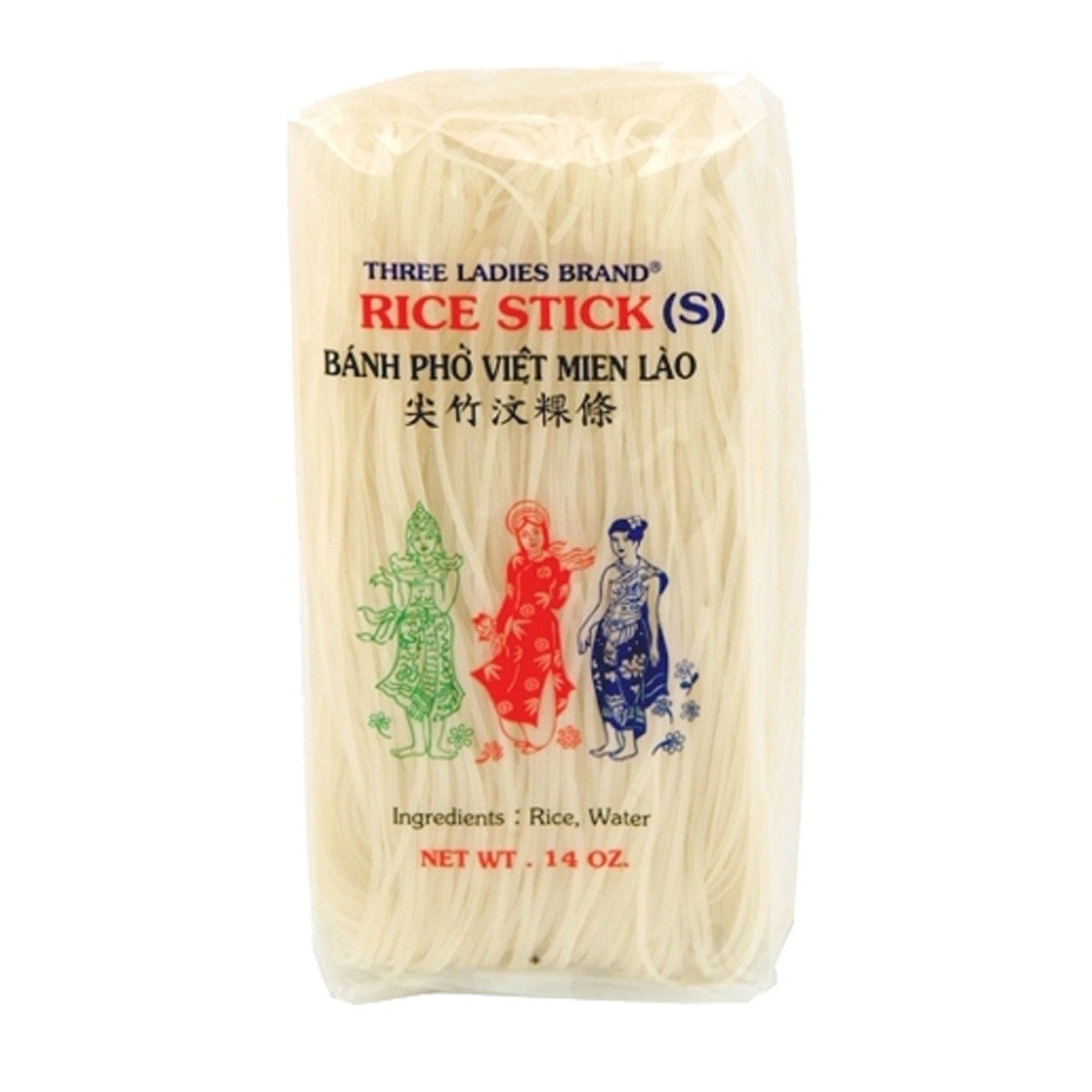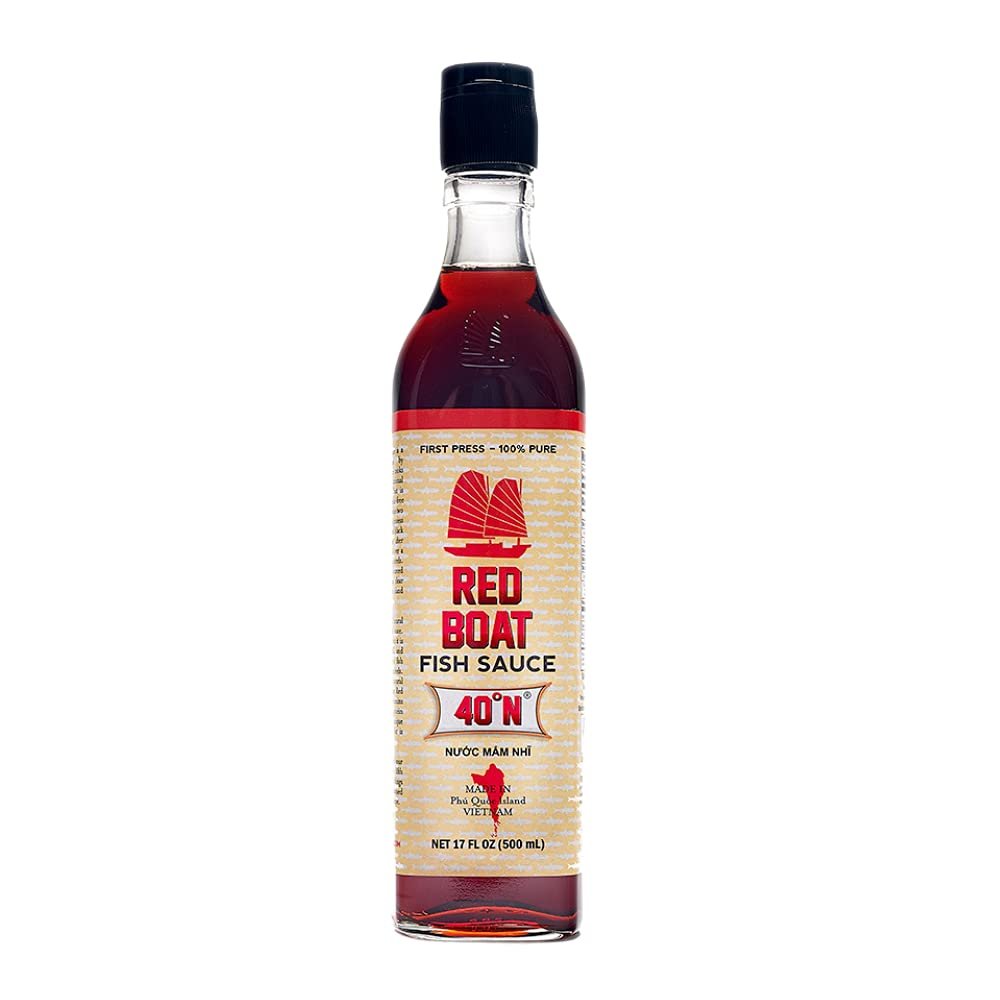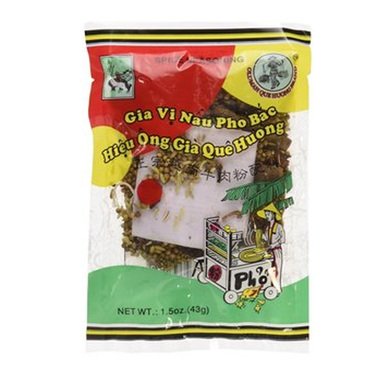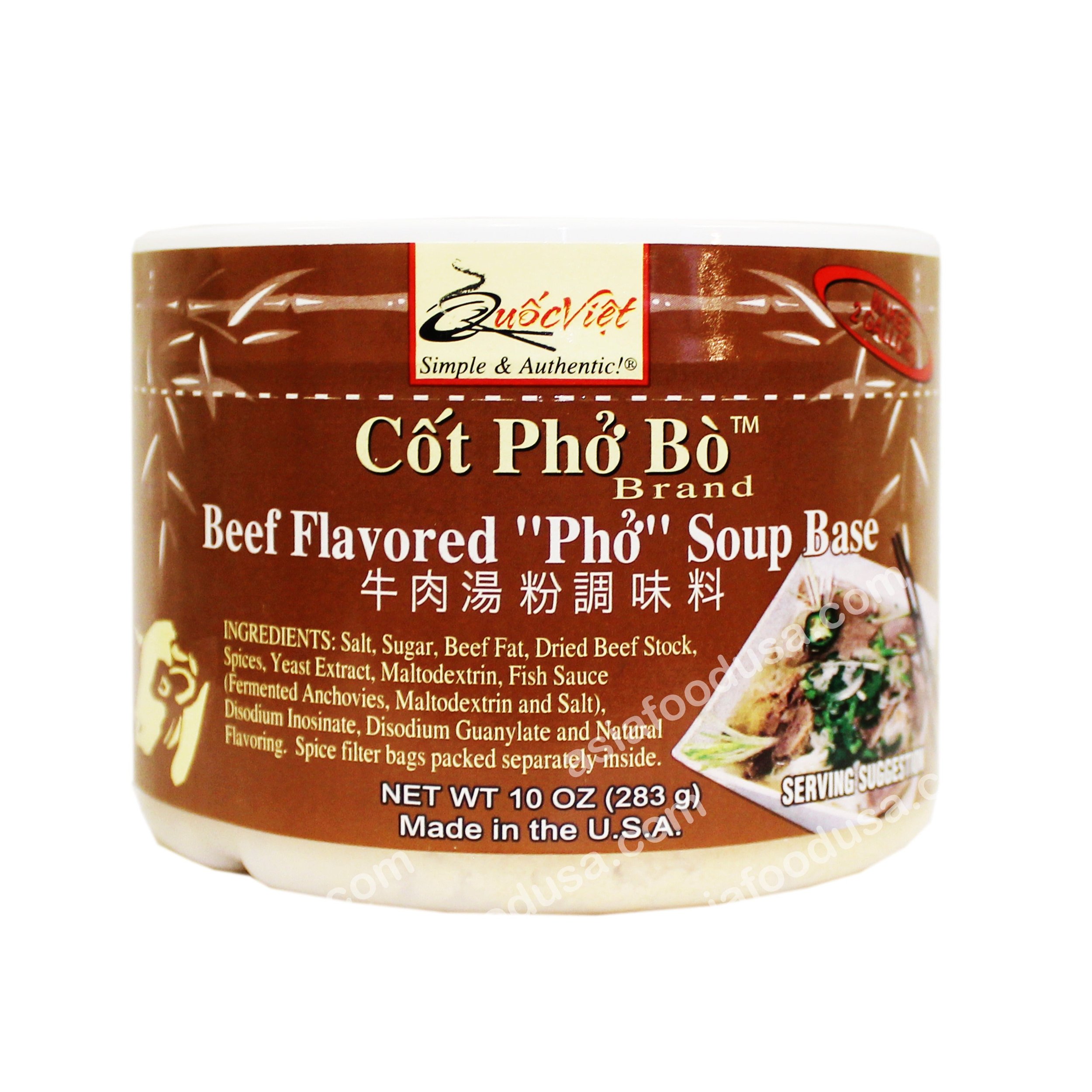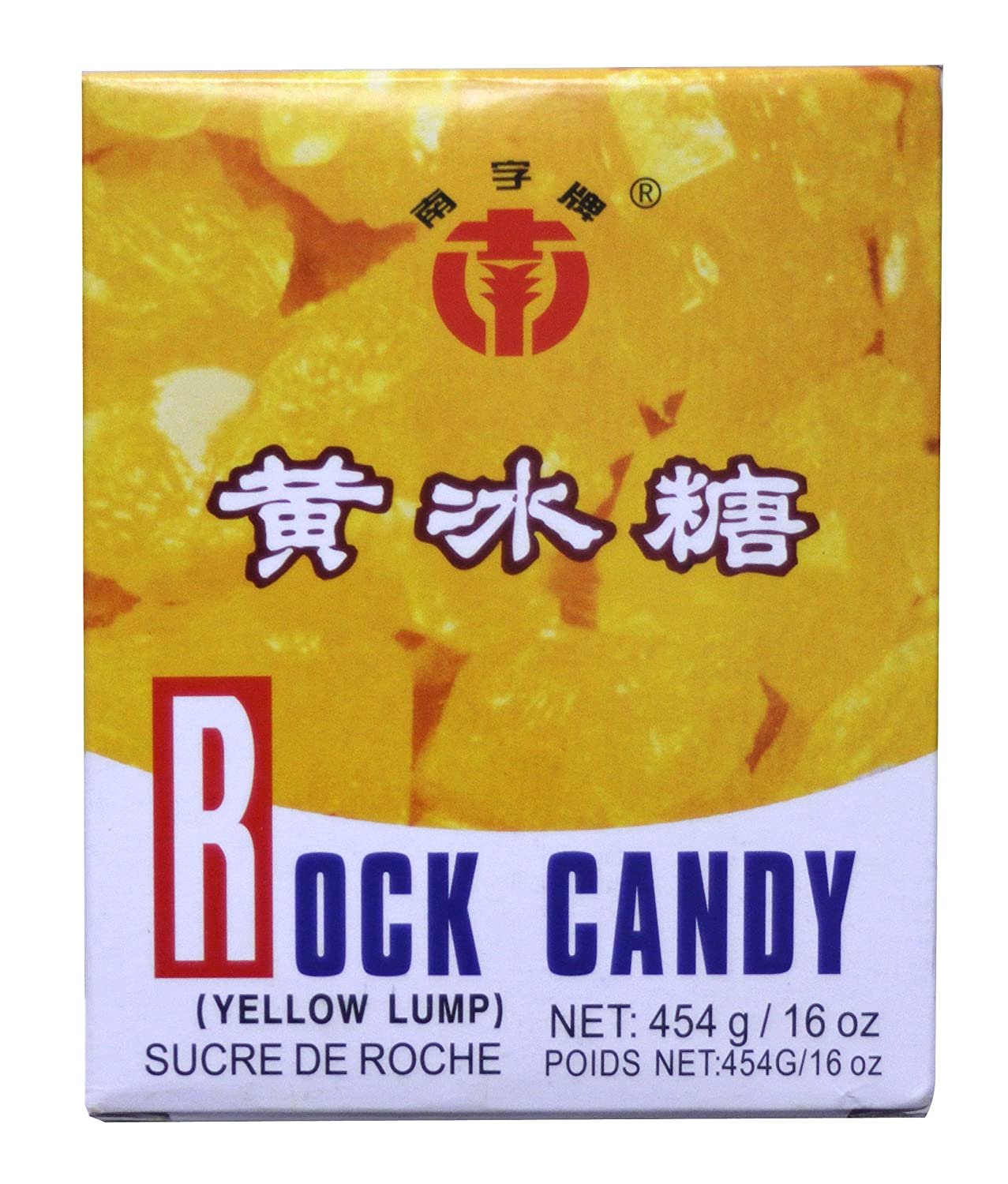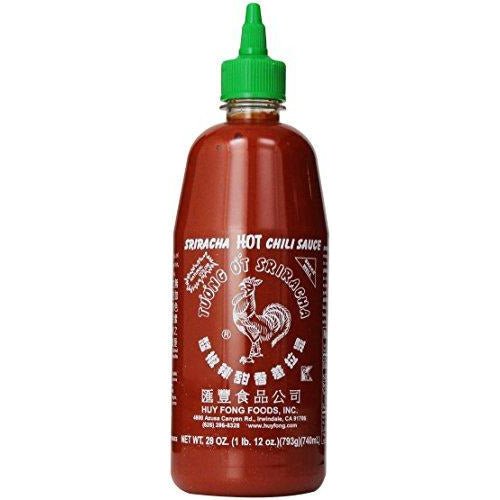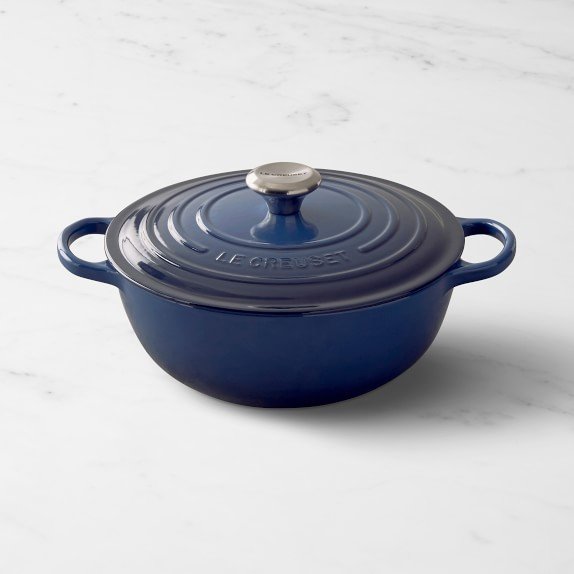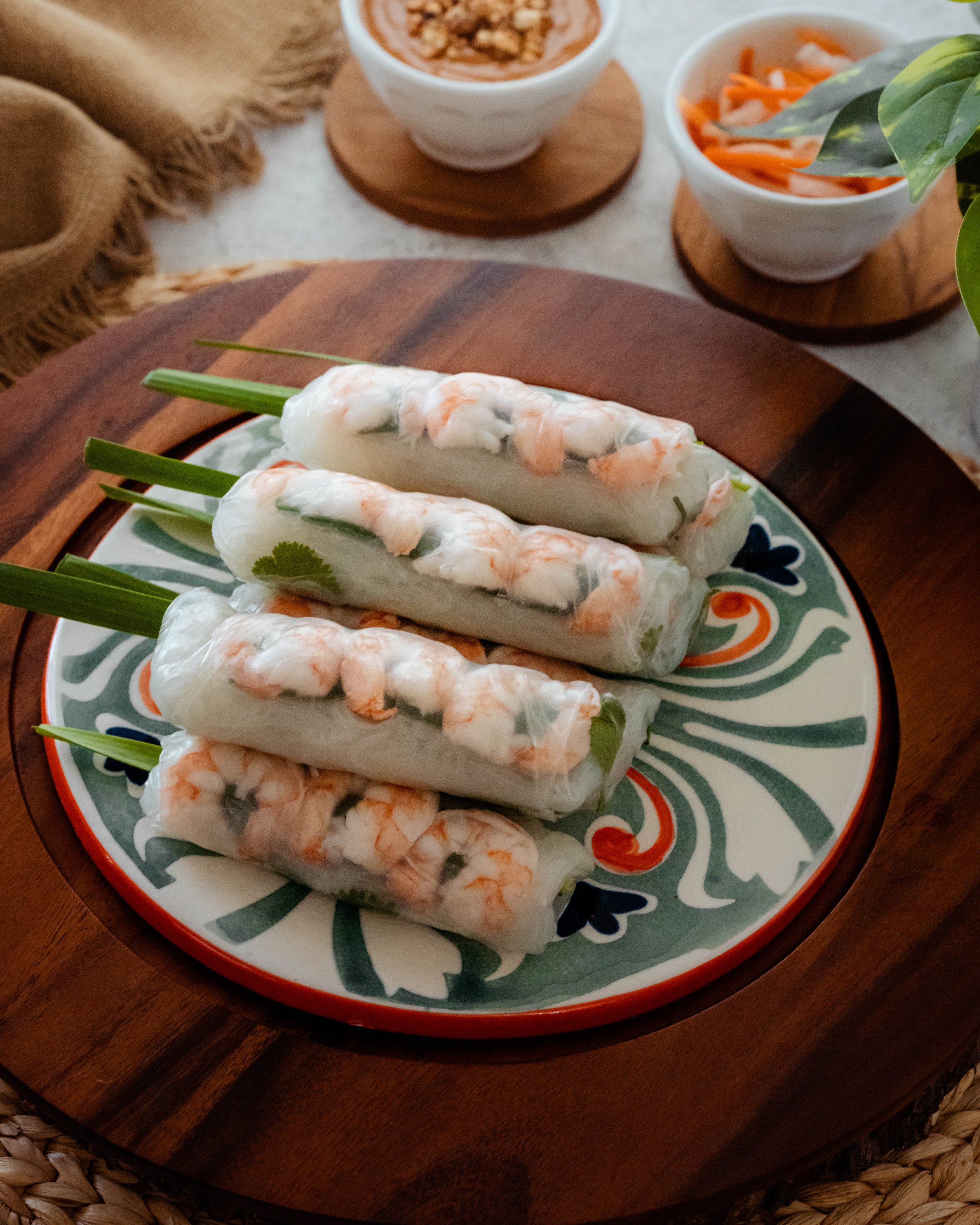Phở Bò
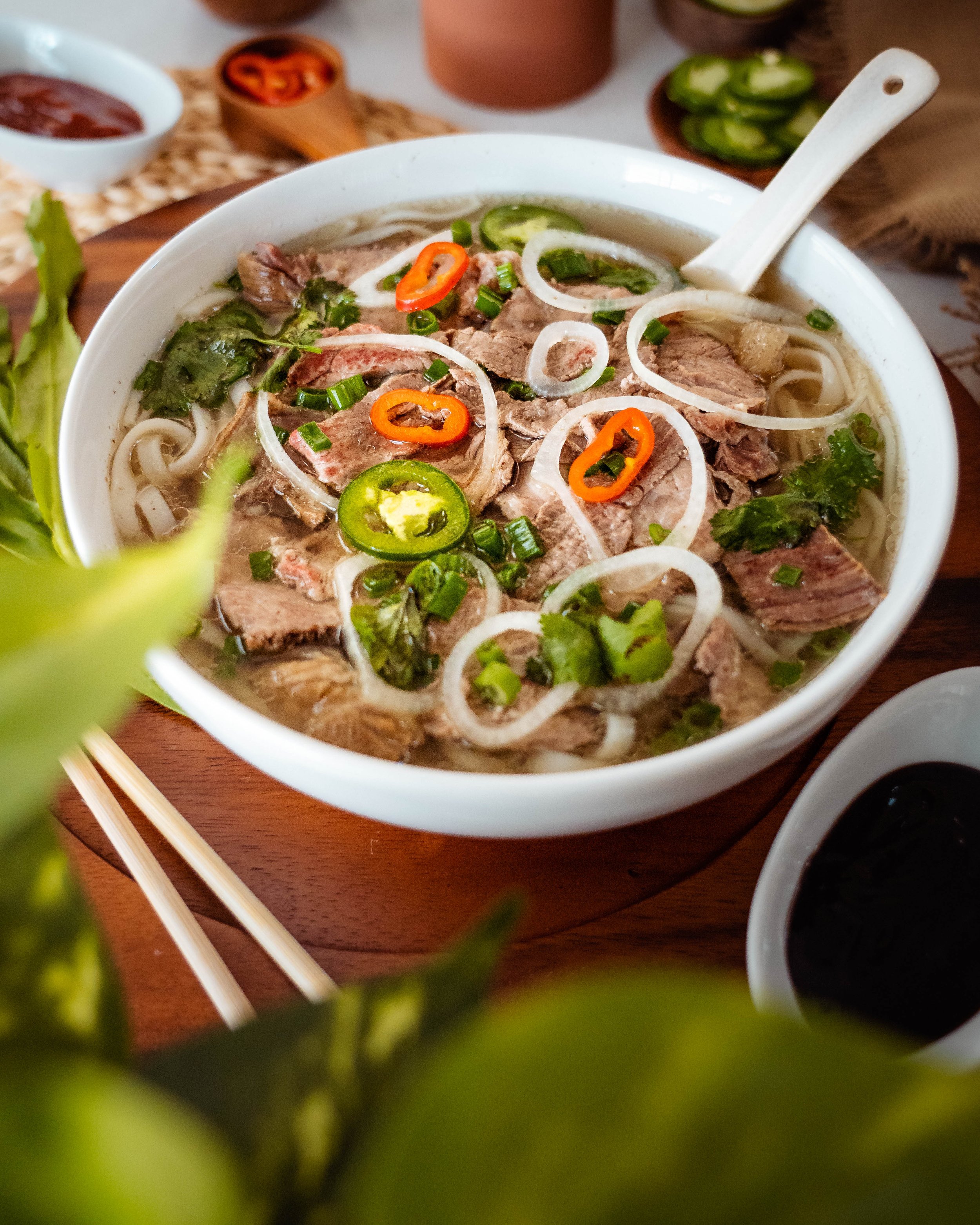
Phở Bò is a fragrant and nourishing, gently spiced beef and rice noodle soup. It is arguably the most popular Vietnamese dish there is and also considered to be the national dish of Vietnam. Pho is a dish that is served primarily at breakfast time and remains a staple of the early-rising Vietnamese population. It is the ultimate comfort food — warm, hearty and deliciously refreshing. It is the perfect way to start the day.
Origin of Phở
Pho is relatively new in the Vietnamese culinary history, only appearing in written records starting from the early 20th century– but the history of this humble soup is both as subtle and complex as its flavor. While most historians agree that pho was invented in the late 19th and early 20th Century in northern Vietnam during French colonial times, its origins remain somewhat murky.
Many believe pho was adapted from the French one pot beef and vegetable stew "pot-au-feu", which shares a phonetic similarity to "phở". While others say it was from the Chinese migrants who settled in the north of Vietnam and sold a dish called "niurou fen", meaning beef with noodles. The Chinese character fěn is pronounced "fuh", which is similar to the Vietnamese word "phở".
Alex Tran, a Vietnamese chef and food writer who is currently based in New Zealand, suggests the origin of pho may be a combination of both. "Rice noodles and other spices used in making the broth undoubtedly have a connection with Chinese people in the north. However, beef is not the daily meat of the Vietnamese as we use buffaloes for farming. Only under the French colonial regime did the consumption of beef start to appear and bloom." Before the French came along, Vietnamese folks were eating soups with river crab and water buffalo — two dishes that are now considered the predecessor of pho.
The first version of this soup made with beef is thought to have originated in the north, 100km south of the Vietnamese capital of Hanoi, in Nam Dinh province. In 1898 when French colonialists started constructing the largest silk plant in Indochina known as the Nam Dinh textile plant, construction workers, technicians and laborers from France flooded into the region to work here. The French liked beef so the production and consumption of beef started to grow. The local chefs substituted river crab and water buffalo for beef to appeal to the French palate. At the same time, villagers were given the discarded bones by the French, which they would take back and boil to make a broth to eat with rice noodles, spring onions and herbs.
And this is how pho as we know today came into existence. From Nam Dinh, pho went in very different directions where it evolved into regional variations, most notably Hanoi's Northern style pho and Saigon's Southern style pho.
Sources: The Pho Cookbook, BBC Travel
Two Distinct Types
Whatever pho's origins, it is both beloved across the country as its the national dish of Vietnam. However, pho is also a matter of fierce local pride and contention, where each region has its own preferred take on the ingredients and recipe. The pho that we have come to know and love outside of Vietnam is Saigon's southern style pho. But there is another type, most pho connoisseurs are familiar with which is Hanoi's northern style pho. The distinct flavor profiles of the northern and southern pho are reflective of Hanoi and Saigon people’s somewhat contrasting nature and lifestyles. Unlike in North Vietnam, food is rich and abundant in South Vietnam. Herbs and other ingredients are used liberally, heck even the bowls are bigger in the south compared to the north.
Pho Bac | Pho of the North, Hanoi
Many purists say that the most authentic pho is from the North since that is where the dish originated. In Hanoi, the pho is all about the quality of the broth, with some saying that even use of too many herbs can distract from the flavor. Northerners cook pho broth with plenty of beef bones along with dried seafood, the stock is known to be very fatty, the broth is heavily spiced and more savory than sweet, and the rice noodles are wider. The garnishes offered generally are very few include only diced green onion, mint, garlic, vinegar, sliced chili and quẩy — fried dough sticks, commonly known as Chinese doughnuts.
Pho Sai Gon | Pho of the South, Saigon
The cultural diversity in the south with its large Chinese and Cambodian communities and the availability of new ingredients, further fueled the dish's evolution. Rock sugar from Chinese cuisine and white radish from Cambodian cuisine were added to the broth to balance the saltiness. The broth is slightly sweeter and clearer while the noodles are thinner. Southerners love to use plenty of condiments like hoisin sauce, sriracha, fermented bean, and chili sauce. It is also garnishes galore with as many as bean sprouts, sliced chilies, lime wedges, basil, cilantro, culantro and rice-paddy herb, which are all placed at the table in giant platters so diners could customize the soup to their preference.
If someone were to ask me, what would be my last meal on earth, pho would be quite up there near the top of the list. In fact, I love pho so much, I have to have it once a month, especially when mother nature decides to visit. Trust me, the pho craving is so real that the husband knows exactly what I need to eat to restore my health and my mood! Lol I mean even now, as I am writing this, I asked Arafat “honey, what’s my favorite food?” and without even blinking, he confidently answered “pho”.
Did you know Pho is very similar to a South-Asian dish called “Paaya”?
Perhaps the reason why I love pho so much is somewhat tied to childhood nostalgia. Growing up, my brother and I loved eating this particular Bangladeshi dish called “Paaya”. It’s a spicy bone broth that’s cooked all day and then left overnight to slowly gelatinize. Like pho, paaya is also a breakfast food in Bangladesh, but it is treated more as a specialty dish during festivals and holidays. Its also a very well-known and loved dish across South Asia with regional variations, as well as Central Asia where it’s called “Pacha” or “Khash”. And so, the first time I had pho, the flavor and aroma immediately brought me back to my favorite paaya. If I break down the recipe, side dishes and even down to the eating habits, there is so much in common between pho and paaya.
Pho
A traditional breakfast dish.
Simmered all day.
Rested overnight to turn gelatinous.
Eaten with rice noodles.
Made with beef bones — mainly shanks, feet and knuckles.
Soup base is made with onion, ginger and whole spices.
Garnished with jalapeño, cilantro, onions, and lime.
Paaya
A specialty breakfast dish.
Simmered all day.
Rested overnight to turn gelatinous.
Eaten with rice flour rotis/crepes.
Made with beef bones - mainly shanks, feet and trotters.
Soup base is made with onion, ginger, garlic, whole spices and ground spices.
Garnished with green chilies, cilantro, ginger and lime.
Recipe — Phở Bò
Vietnamese Beef Pho Noodle Soup
This is a two-part recipe and it is a two day process. As in if you are planning on having pho for Sunday brunch, you need to get started with this recipe early on a Saturday. The first part is cooking the broth which is lengthy and depending on how long you would like to cook it, this process can take up to 6 or 12 hours. Then the broth is cooled and gelatinized by refrigerating it overnight. The second part of the recipe is reheating the broth, bringing all the ingredients together and assembling the soup bowls.
Part 1 — Making the Broth
Serving Size: 8
Quick Note about the Serving Size
What you will be seeing in the process pictures below is actually for 4 servings. Originally, I had set out to make 8 servings but I chose to cut it in half because it’s only the 2 of us and I did not have enough space in the freezer to store leftover broth. I kid you not, I already have jars of bone broth (not Vietnamese though) sitting in my freezer for casual sipping on days I feel under the weather or just need a good pick-me-up!
But the recipe I am sharing for the broth is for 8 servings, which is what I personally recommend. The secret to making any good soup is to always make it in a large batch. The bigger the pot of broth with more bones and meat, the better. In a dish like pho, more ingredients means more collagen and fat, which in turn will give more flavor and more umami.
And if you want to scale up the recipe to 2x for 16 servings, then be my guest. I am sure it will be even better, it will feed a crowd or you can store a ton of leftover bone broth in the freezer like I do.
Parboil the Bones
Wash the bones well, making sure not to discard the marrow.
Put the bones in a stockpot and add enough room temperature water to cover them.
Partially cover the lid and bring it to a vigorous boil over high heat.
Once it starts bubbling and boiling, remove the lid.
Let it boil for another 5 minutes, all the impurities will float to the top.
In a large colander, strain the bones, discarding all the water and the foamy residue.
Rinse off each bones well, making sure to clean any unwanted scum stuck to them.
Rinse the stockpot as well, washing off any impurities then return all the bones to the pot.
Char the Raw Aromatics
Yellow Onion — 1 lbs, that’s about 2 medium onions
Ginger — 1 knob, 4-6 inch unpeeled
Place the onion and ginger (with their skin on) in a small grilling rack and broil in high for 10 to 15 minutes. Do this one at a time just to be safe.
About halfway, use a tong to flip them over to the other side. Keep an eye on them because ginger and onion have different cooking times. You will know they are ready when the skin develops splotchy black marks.
Remove the aromatics from the heat and let them cool for 10 minutes.
Once cooled, remove the charred skin from the onions. Using a teaspoon, peel and remove the ginger skins.
Rinse both under running water to discard any black bits.
Using the heel of a knife or a pestle, bruise the ginger lightly.
Set the onions and ginger aside.
Toast the Whole Spices
Star Anise — 6
Cloves — 6
Cassia Bark — 2
Black Cardamom — 2 small
Fennel Seeds — 1 tsp
Coriander Seeds — 1 tsp
To toast whole spices, put them in a small dry skillet over medium-low heat.
I like to toast them one by one because each spices have different toasting time. This way you can bloom and smoke them as they require. Otherwise you may find large spices like star anise or cassia haven’t bloomed at all, yet smaller spices like fennel and coriander seeds have already started to burn.
Sir the spices frequently, just until they become very fragrant and darken slightly.
It shouldn't take more than a few minutes; watch carefully so they don't burn.
In a shallow bowl, set the spices to cool down
Once the spices have cooled completely, in a large spice infuser (disposable teabag or a large mesh tea infuse), tie up the toasted spices.
If you don’t want to buy the whole spices individually, there are little premade packs specifically made for pho. I like this Spice Seasoning Packs — it comes with all the spices I mentioned above.
Cooking the Bone Broth
Paeboiled + Cleaned Beef Bones
Charred Aromatics
Yellow Rock Sugar — 1 chunk, you can also substitute with 1 tbsp of white sugar
Beef Chuck — 1.5 lbs
Kosher Salt — 1 tbsp
Fish Sauce — 1/2 cup
MSG — 2 tsp
Cot Pho Bo — 5-6 tbsp
Water — 6 quarts
Pour 6 quarts of distilled room temperature water to the stockpot with the parboiled and cleaned bones.
Bring it to a boil over high heat, then lower the heat to a gentle simmer.
Again, any remaining scum and foamy residue will rise to the top. Use a mesh skimmer or a large shallow spoon to skim them off. Once the broth is clear of any foamy impurities, its time to add the rest of the ingredients.
Add the cleaned onion and ginger.
Add the spice infuser to the broth.
Add the beef chuck, salt, fish sauce and sugar.
Maintain a gentle simmer, adjusting the heat if necessary and cook uncovered for 1.5 hours.
Closer to the 1.5 hour mark, prepare a large bowl of cold water.
Remove the beef chuck and soak it in the cold water for 10 minutes, to prevent dry and dark meat.
Drain the meat and set it aside on a pyrex bowl (preferably one with a lid) to cool completely.
Once cooled, cover the bowl with plastic wrap, then tighten the lid and refrigerate the beef until ready to assemble the bowl of pho.
Meanwhile, maintain the broth to a steady gentle simmer for at least another 1.5 hours. The house should smell heavenly by now.
You can stop here at the 3 hour mark. Or you can keep going for a total of 6, 12 or even 24 hours. This is how I like to describe the broth — 3 hours is Ok, 6 hours is good, 12 hours is better and 24 hours is the best, as in authentic back home in Vietnam restaurant quality pho. The longer the better and it will develop a richer bone broth. Most home cooks and Vietnamese moms will usually cook the broth for 12 hours/overnight, which is also what I personally recommend.
Keep a kettle of hot water ready, should the broth ever reduce too much, you can add back more liquid.
It is very crucial that at no point, should the broth ever boil in high heat. It should always be a gentle simmer. If you plan on simmering the broth overnight, use the smallest burner on your stovetop which is also known as the simmer burner used for precise low flame cooking. Also, keep the dial on the lowest setting possible — you should hardly be able to see the flame.
Once you have cooked the broth for a significant amount of lengthy time of your preference, turn off the heat and let the broth rest for 30 minutes. This allows for any impurities to settle and the fat to rise to the top.
In the meantime, prepare a large bowl of cold water — enough to submerge the bones.
Remove the bones from the broth and soak them in the cold water for 10 minutes.
Then remove any bits of gelatinous tendons and marrow from the bones. Store the tendons and marrow in a container and keep it in the refrigerator until you are ready to assemble the soup bowl. Discard the bones or save them for treats if you have little doggos!
Once the broth has cooled down, strain it through a fine mesh sieve, positioned over a large bowl. Let the broth cool down and then refrigerate it overnight.
Part 2 — Bringing It Together
Serving Size: 1
Quick Note about the Serving Size
All the ingredients listed below is measured for 1 serving, as in 1 bowl of soup each. The broth itself is enough to serve 8 people. Once you have reheated the entire broth, you can measure out to however many people will be eating. For example, I have listed 70g of noodles for 1 serving/person, but if you are feeding 2 people it’s 140g of noodles, for 4 people it’s 280g and so on. Just make sure to multiply/scale the ingredients to the number of servings you need.
Reheating the Bone Broth
Once the broth has been refrigerated overnight, take it out of the fridge next morning.
The fat from the broth should solidify and rise to the top. Using a large shallow spoon skim off large bits of fat. Do not discard them, set them aside in a small bowl, in case if the broth needs to be flavored during assembly.
Note: Do try to leave some fat behind in the broth when skimming, because all the spice and umami notes, linger in the fat, or else you will end up with a bland bowl of pho.
Reheat the broth, making sure to maintain a gentle simmer. I like to gently reheat it for another 30 minutes to 1 hour.
Taste and adjust the flavor to your liking — this is the part you can add back additional fat, salt, msg, cot pho bo, fish sauce and sugar, if necessary.
Preparing the Noodles
Soak the dry noodles in hot water until pliable and opaque, about 15 to 20 minutes.
Drain in a colander and rinse briefly under cold running water. Set them aside.
Preparing the Meat
Thinly Sliced Steak — 2 oz, 3mm (carpaccio cut) - top sirloin, bottom sirloin, new york strip
Cooked Beef Chuck (from the broth) — 2 oz, 3mm
Marrow and Tendons (from the bones) — 2 oz
For the thinly sliced steak, you can ask your local butcher to cut the meat of your preference in a carpaccio or shabu-shabu style. If you were not able to get hold of your butcher or buy premade thinly sliced steak which are often available at Korean, Japanese and Asian grocery stores then fret not! You can do this at home as well.
Place the hunk of raw beef in your freezer for 15 minutes. Then using a very sharp knife, slice it across the grain into pieces that are no thicker than 3mm each. The goal is to cut the raw meat so thin that when the boiling pho broth hits the thinly sliced steaks, it will cook instantly.
Set the raw meat aside in a separate bowl, inside a bigger bowl with ice. This way the meat will stay cold and it will be separate from other ingredients. These are just some best practices to avoid any risk of cross-contamination.
Cut the cooked beef chuck across the grain into slices that are also no thicker than 3mm. Again, use a sharp knife and if you are having trouble cutting the meat, you could also freeze the cooked beef chuck for 10 to 15 minutes in the freezer. It’s best if the beef is cold so its easier to slice them thin. Set them aside.
Cut the marrow and tendons into bite size pieces as well and set them aside with the sliced beef chucks.
Preparing the Raw Aromatics + Herbs
Yellow Onion — 1/4 onion, thinly sliced against the grain, soaked in warm water
Scallion — 2, thin slice, green parts only
Cilantro — couple leaves
Culantro — 1, chopped
Red Pepper/Fresno Chile — couple thin slices
Jalapenos — couple thin slices
Wash all the raw aromatics, herbs and vegetables.
Thinly slice the onion against the grain, then soak them in warm water. The warm water tames the bite of the raw onions, mellows out the sulfur flavor, allowing the pure flavor and subtle sweetness to shine through.
Cut the jalapenos and red chiles into thin slices. Set them aside.
Cut the herbs — scallions, cilantro and culantro into however you prefer. I prefer to cut the scallions and culantro in to a rough chop. As for the cilantro, pick out the leaves from the stems.
Prepare a Garnish Plate
With the following ingredients
Bean Sprouts
Lime Wedges
Thai Basil
Assembling the Bowl
In a large plate, line up all the ingredients in order of assembly for the bowl — starting with the noodles, thinly sliced cooked beef, bite size marrow and tendons.
Place the bowl of thinly sliced raw beef next to the large plate, making sure the raw beef does not touch the cooked beef, at least not yet.
In a separate plate, line up all the fresh ingredients — onions, scallions, cilantro, culantro, jalapeno and red pepper slices.
Prepare a large pot of boiling water or keep a kettle with hot water and large bowl ready. Place an individual portion of the noodles in a mesh strainer and quickly dunk it in the boiling water, or rinse it with boiling hot water from the kettle over the large bowl. Shake off the excess water and empty noodles into the bowl.
Top off the noodles with individual serving of the marrow and tendons, sliced beef chuck, followed by the thinly sliced raw steak. Make sure to arrange the slices flat on top of the noodles and the raw beef should be the last to be placed on top, so when we do pour the hot broth, it will cook the meat immediately. See the video for reference.
Add a generous heaping of your preferred garnishes on top. I personally like to add lots of onion slices, chopped scallions and culantro, few cilantro leaves and few slices of jalapeno and fresno chiles.
Finish off the bowl with couple grinds of black pepper.
We are now ready to add the broth, which has been simmering away for the last 30 minutes at least.
Raise the heat and bring the broth to a vigorous boil.
If you are not using up all 8 servings this time — let’s say you are only serving 2 or 4, then in a separate smaller Dutch oven or stock pot, pour 1/4 (for 2 servings) or 1/2 (for 4 servings) of the broth that has been simmering. Bring that to a boil over high heat, instead of the large pot of broth.
Taste test the broth one more time and check if it needs more fish sauce, salt or sugar. Adjust accordingly.
Using a large ladle, add 2-3 scoops of the hot boiling broth to the bowl. The hot liquid should cook the raw beef immediately, while slightly wilting the raw garnishes and evenly warm all the rest of the ingredients.
Serve immediately with a plate of additional garnishes that should include — fresh bean sprouts (washed well), lime wedges, extra cilantro and culantro, and red chili slices.
Also keep little individual dipping bowls with Hoisin and Sriracha for each person to dunk and spice the meat as they eat.
Enjoy your bowl of Phở Bò loudly and proudly!
Ps. Keep scrolling below to read more about general pho etiquettes and how to eat pho like a pro.
How to Eat Pho Like a Pro
Pick up a pair of chopsticks (or fork) in your dominant hand and a soup spoon in the other. When you eat, you will be using one after the other.
The best way to eat pho is when it’s piping hot, you literally want to sweat it out while you slurp up a hot bowl of soup.
Sample the broth on its own first, unadulterated with any condiments. Make sure to stick your face in the bowl while you’re at it, and let the aroma hit your nose – it will enhance the taste even more.
Normally the broth is meant to be so perfect having adjusted the flavors several times, you can usually go without most of the garnishes. So to add these other flavors and textures in, before giving it a chance on its own, is pretty incriminating.
Add the raw garnishes like beansprouts, Thai basil and a squeeze of lime to the bowl according to your preference.
In a small condiment bowl, add the Sriracha and Hoisin. This should only be used to dip the meat before you eat it. You are not supposed to add the sauces directly to the broth, this can also be considered a very serious crime.
Pinch a few noodles in between your chopsticks, careful to include some aromatics and herbs, along with a chunk of meat, then dig in. At the same time, with your other hand, take in a spoon of the broth and slurp it down. Loudly!
A wholesome bite of pho should have some broth, noodles, meat dipped in sriracha and hoisin, and few slivers of herbs and aromatics.
Once the noodles are gone (they usually go first), raise the bowl to your lips with both hands and slurp it down. No broth left behind! Especially when we have spent over 2 days cooking this precious!
SHOP THIS POST
If you recreate our recipe
TAG & FOLLOW @TheSpiceOdyssey
Stay up to date with us on on Instagram, Pinterest, Youtube and Facebook.



